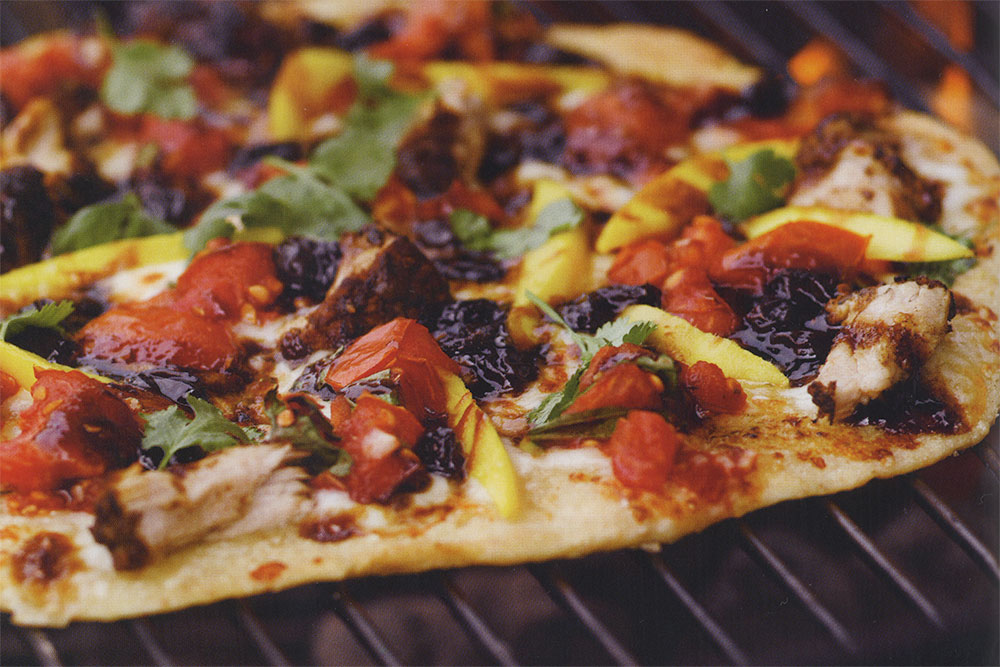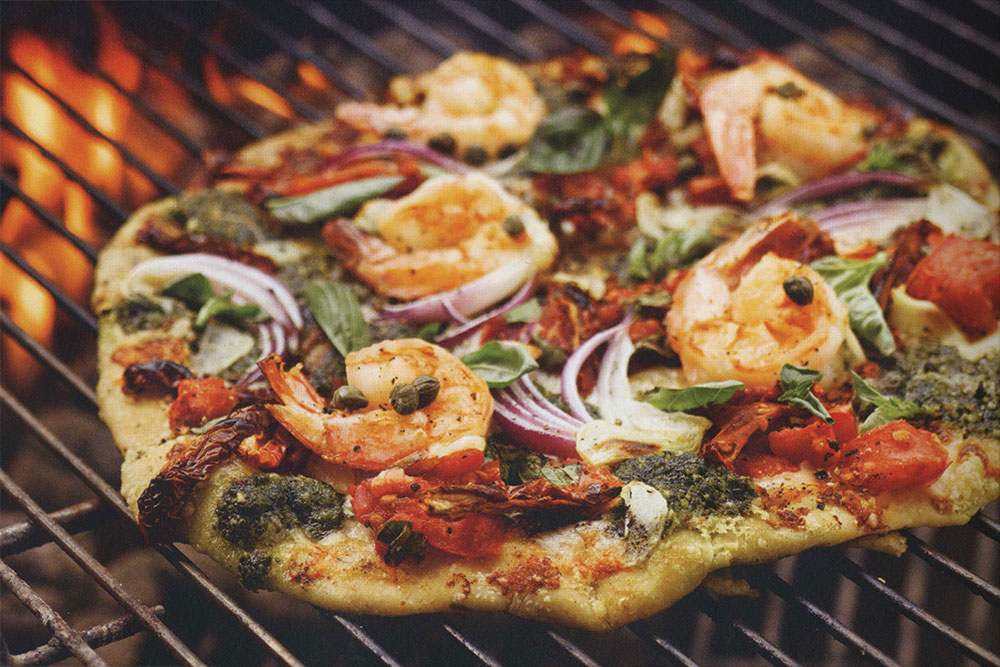The concept of grilled pizza hasn’t exactly caught fire (so to speak) in the foodservice industry. But the few restaurants that offer grilled pies treat them as signature items—and usually charge a premium price for them. Johanne Killeen and George Germon, owners of the legendary Al Forno Restaurant (alforno.com) in Providence, Rhode Island, reportedly first came up with the idea of cooking a pizza over a charcoal-fired grill in the 1980s. Direct contact with the flame lent the crust a uniquely delicious flavor, but the culinary innovation never gained traction as a major trend—except with backyard chefs looking for something different.
Another Providence pizzaiolo, Brian Kingsford, chef/owner at Bacaro Restaurant (bacarorestaurant.net), grills his pizza from start to finish—no oven needed. He prefers hardwood charcoal (Canadian maple), which has less than 2% moisture, making it an extremely hot cooking source (about 700° to 1200°F). “There are some South American hardwood charcoals available, which also burn nicely but tend to be very dense, so it takes longer to light and relight,” he says. “The plus side of this is that you burn less charcoal; the downside is that you lose temperature for about 20 minutes every time you feed more coal.” The bags of coal he uses cost about $11 for 18 lb.
Kingsford shared his tips for grilling pizzas over charcoal:
-
Light the charcoal or charwood well in advance.
-
Stay ahead of the burn, watch the coals and embers, and add before you need to—while there’s still enough fuel available to ignite the new coal.
-
Position a make-up air vent toward the fire to fan it, helping speed up ignition.
-
Due to sparks and potential chimney/hood fires, install a water-wash hood or brick chimney when working with this product.
- Hiring becomes a bit more of a challenge, as most line cooks are not seasoned wood-fuel operators, so training is long and necessary. Plus, the heat emanating off a grill is no joke; most cooks can’t take it.
“Grilling pizza is an interactive sport—you are constantly rotating and looking for the hot spots while moving the more cooked portions toward the colder spots of the grill,” Kingsford says. “These sweet spots are created by piling coals and thinning coals (creating a tier) as well as recognizing the natural airflow of the particular grill. When using a mechanical hood, the fan will pull the air across the grill one way or another toward the fan, which helps build the sweet spots.”
Grilling pizzas is definitely a commitment, but Kingsford prefers cooking with coal because it is tasteless; coal doesn’t impart any flavor or smoke into food, due to its low moisture content. “The moisture content of wood imparts smoky flavor into food, but hardwood charcoal allows us to cook our food cleanly without overpowering the natural flavors with smoke,” he says. “If we wish to get a little smoke into something—such as cherrywood into a piece of duck or applewood into a piece of pork—we simply introduce a branch into the coal right under the product for only as long as we wish to flavor.”
Tracy Morin is PMQ’s senior copy editor.
| How to Grill a Pizza |
Chef Craig W. Priebe is one of the industry’s foremost experts on grilling pizzas and the co-author of Grilled Pizzas & Piadinas, a 2008 book on the subject. Priebe offers the following tips for the beginning pizza grillmaster.
|
|
The Gamberian |
|
Recipe courtesy of Grilled Pizzas & Piadinas, by Craig W. Priebe with Dianne Jacob; Photo by Charles Schiller Ingredients:
1 pizza crust, grilled Instructions:Brush the grilled side of the pizza crust with 1 tbsp. of oil. Dust with Parmesan. Heat remaining 1 tbsp. of oil in a sauté pan over medium heat. Sauté shrimp until opaque and pink, about 1½ minutes. (Don’t worry if they seem undercooked; they'll cook more on the grill.) Season to taste with salt and pepper. Top crust with mozzarella. Spoon tomato sauce and pesto on top, creating an alternating pattern of red and green. Add sundried tomatoes, shrimp, red onions, capers and garlic. Grill according to instructions on pg. 40. Garnish with basil and cracked black pepper before serving. |
















